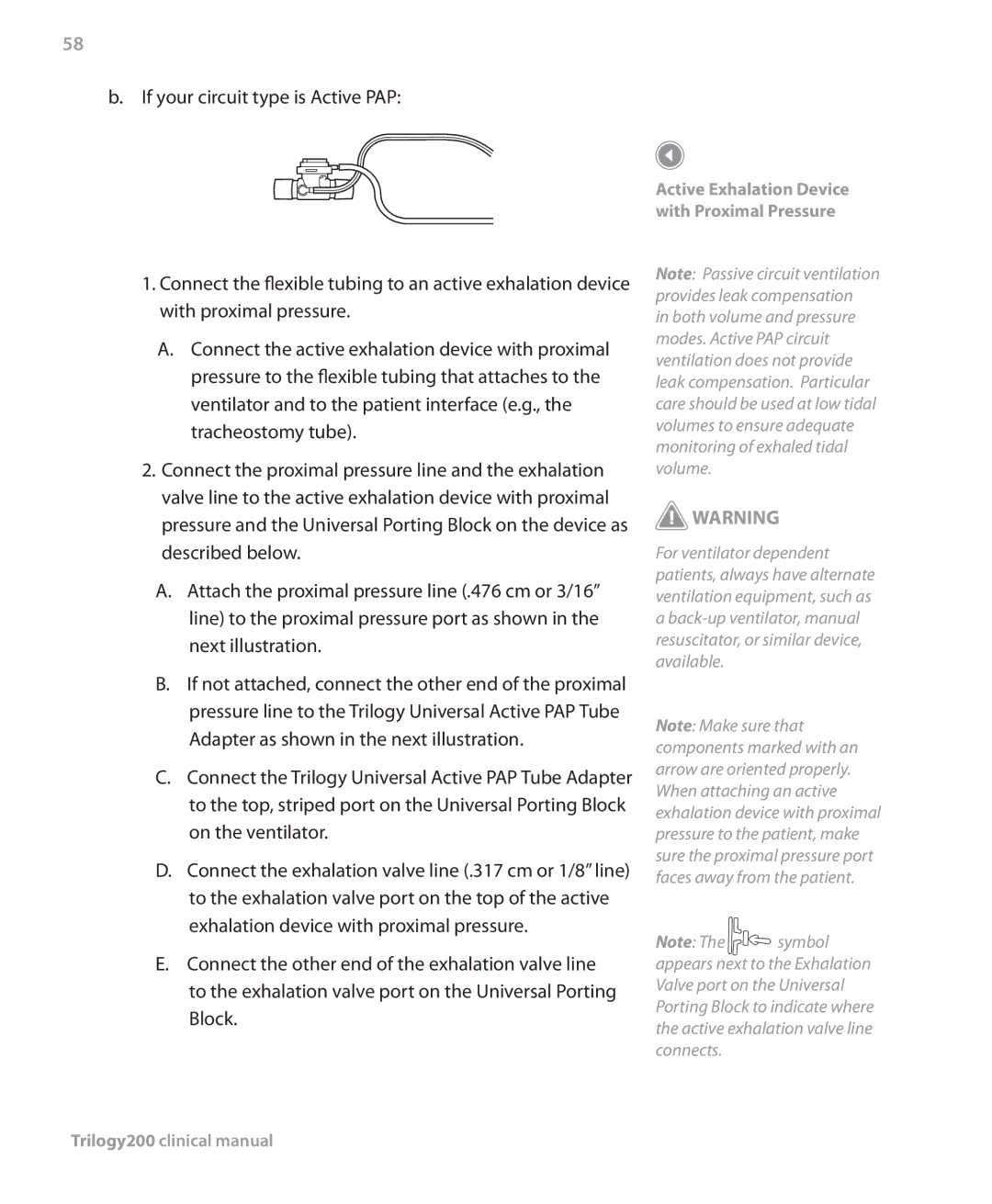
58
b.If your circuit type is Active PAP:
1.Connect the flexible tubing to an active exhalation device with proximal pressure.
A.Connect the active exhalation device with proximal pressure to the flexible tubing that attaches to the ventilator and to the patient interface (e.g., the tracheostomy tube).
2.Connect the proximal pressure line and the exhalation valve line to the active exhalation device with proximal pressure and the Universal Porting Block on the device as described below.
A.Attach the proximal pressure line (.476 cm or 3/16” line) to the proximal pressure port as shown in the next illustration.
B.If not attached, connect the other end of the proximal pressure line to the Trilogy Universal Active PAP Tube Adapter as shown in the next illustration.
C.Connect the Trilogy Universal Active PAP Tube Adapter to the top, striped port on the Universal Porting Block on the ventilator.
D.Connect the exhalation valve line (.317 cm or 1/8” line) to the exhalation valve port on the top of the active exhalation device with proximal pressure.
E.Connect the other end of the exhalation valve line to the exhalation valve port on the Universal Porting Block.
Active Exhalation Device with Proximal Pressure
Note: Passive circuit ventilation provides leak compensation in both volume and pressure modes. Active PAP circuit ventilation does not provide leak compensation. Particular care should be used at low tidal volumes to ensure adequate monitoring of exhaled tidal volume.
![]() WARNING
WARNING
For ventilator dependent patients, always have alternate ventilation equipment, such as a
Note: Make sure that components marked with an arrow are oriented properly. When attaching an active exhalation device with proximal pressure to the patient, make sure the proximal pressure port faces away from the patient.
Note: The symbol appears next to the Exhalation Valve port on the Universal Porting Block to indicate where the active exhalation valve line connects.
